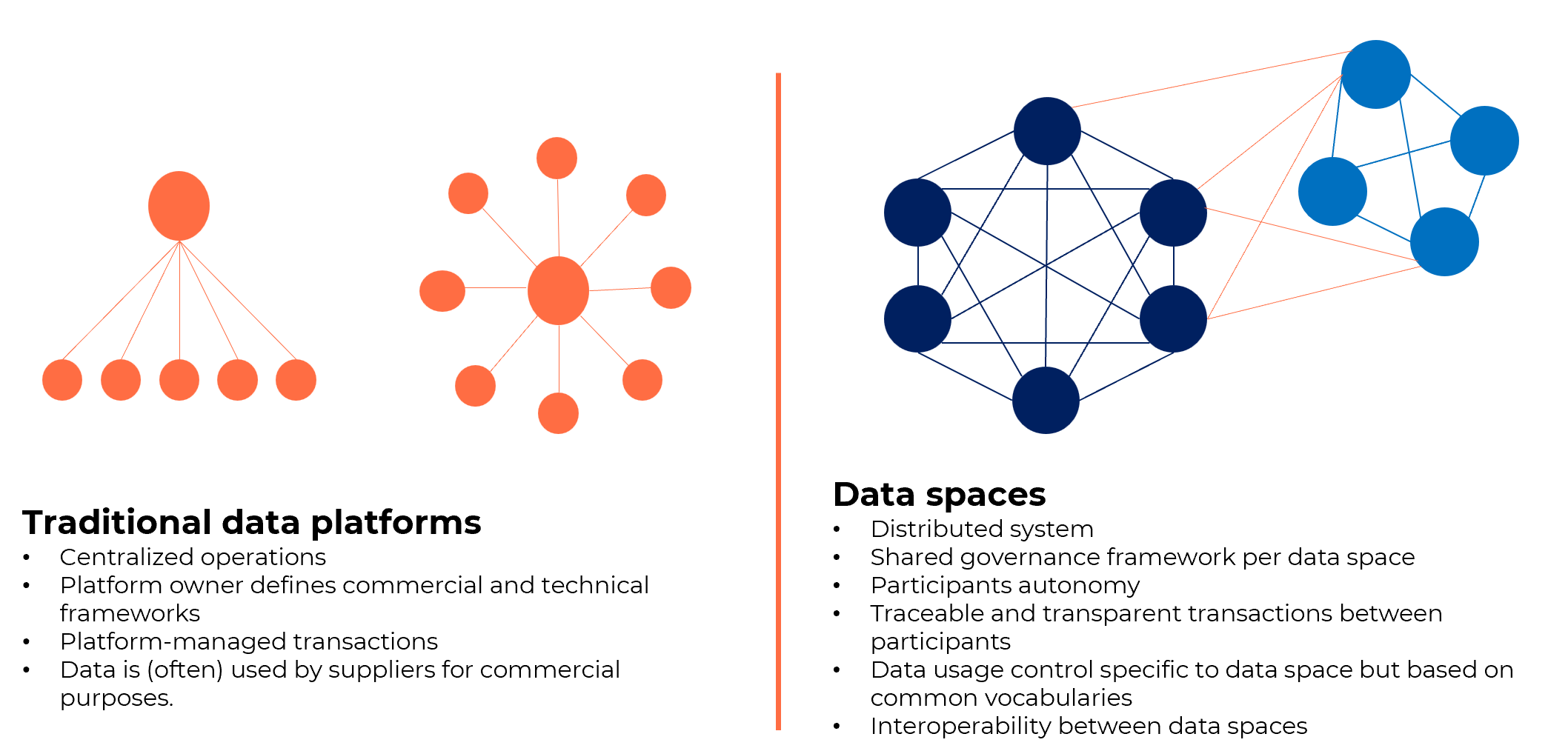Decoding: "Data spaces or Data platforms?"
October 10th, 2024
The ecosystem built by the European association Gaia-X aims to foster the emergence of data spaces, in line with the European data strategy, published in February 2020. After the free movement of people, goods, services, and capital, the goal is to create a single data market that allows the free flow of data within the EU and across different sectors, benefiting businesses, researchers, and public administrations. This would meet the highest standards of digital trust and foster innovation.
A data space is an open and federated infrastructure that enables stakeholders to share, exchange, and collaborate on data under common operating rules, in compliance with European legislation and values, ensuring fair treatment for all parties involved. These rules are defined by the stakeholders of the data space.
The following diagram illustrates the differences between data “spaces” and data “platforms,” which have existed for some time. In fact, a data platform enables the expansion of business and/or improvement of the user experience. It centralizes the collection of various data, optimizes storage, and manages processing to make the data usable across the organization. Its competitive advantage lies in controlling the ecosystem that feeds the platform, as referenced in the Cigref report New Platform Strategies. Data spaces differ from data platforms by offering the possibility of scaling up within a domain and even beyond, as Gaia-X ensures their interoperability.

How do data spaces work?
A data space is an environment where participants collaborate to exchange data or services while providing a framework and tools to control these exchanges.
Each data space consists of a group of stakeholders focused on a specific domain, sector, or even a set of use cases—for example, optimizing renewable energy production, optimizing mobility during the Olympics, or tracking aircraft construction parts.
These participants establish common rules specific to their domain, based on the Gaia-X principles.
This framework and these tools are supported by technological components to:
- Certify or label products and services that are based on Gaia-X specifications, verified by Gaia-X’s distributed trust nodes, the Digital Clearing Houses.
- Validate compliance within the data space.
- Negotiate and formalize contracts for services or data sharing. Contractual clauses are described in a standard and verifiable language, allowing parties to ensure that the products and services provided are consumed according to the terms of the contract.
These principles apply to all data spaces and enable interoperability across domains or sectors.
The Gaia-X principles, applied to data spaces, ensure that service providers and data set providers, as well as consumers, can trust one another, be interoperable with other data spaces, and confidently develop new products and services.
👉 To learn more, follow the short training modules from Hub France Gaia-X on data spaces.
👉 Download this article in PDF format.